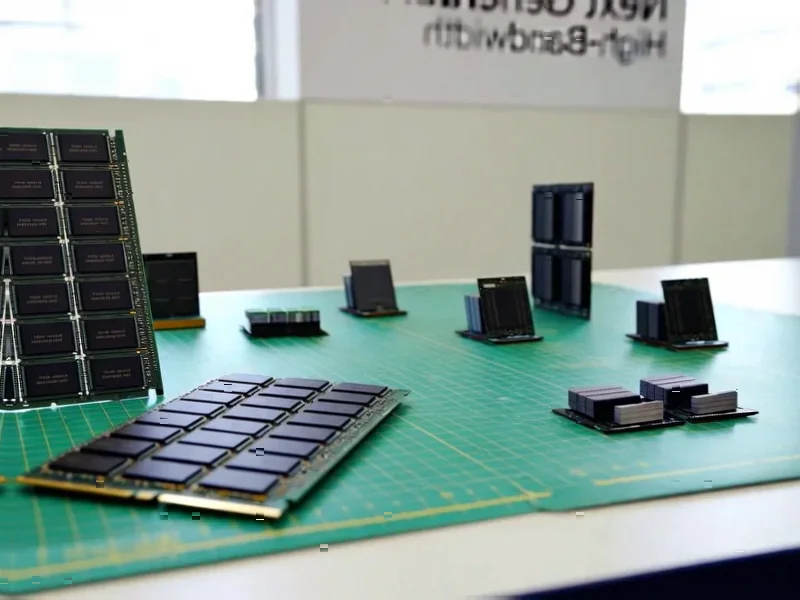According to Guru3D.com, SAPPHIRE Technology has officially launched its EDGE AI Series mini PCs powered by AMD’s latest Ryzen AI 300 Series processors, following an initial preview earlier this year. These ultra-compact systems measure just 117 × 111 × 30 mm yet feature dedicated Neural Processing Units capable of up to 50 trillion operations per second, enabling real-time AI tasks like object detection and voice recognition without cloud processing. The series includes three models – EDGE AI 370 with Ryzen AI 9 HX 370, EDGE AI 350 with Ryzen AI 7 350, and EDGE AI 340 with Ryzen AI 5 340 – all available as barebone kits without RAM, storage, or operating system. The systems offer impressive expandability with DDR5 SO-DIMM memory support up to 96GB, multiple M.2 slots, 2.5 Gb Ethernet, and comprehensive I/O including USB4 and HDMI 2.1, making them Copilot+ PC ready for Microsoft’s upcoming AI features. This announcement signals a significant acceleration in the democratization of edge AI computing.
The Quiet Revolution in Edge Computing
What Sapphire is delivering here represents more than just another mini PC refresh – it’s a fundamental rethinking of where AI processing belongs. For years, the industry has been stuck in a cloud-centric model where AI workloads required massive data centers and internet connectivity. The EDGE AI Series with its 50 TOPS NPU performance demonstrates that we’ve reached an inflection point where local AI processing can handle sophisticated tasks that previously demanded cloud resources. This isn’t just about speed; it’s about architecture. When you can run object detection, media enhancement, and complex inference locally, you eliminate the latency, bandwidth costs, and privacy concerns that have plagued cloud-dependent AI solutions.
Transforming Industrial and Commercial Applications
The implications for industrial automation are particularly profound. Manufacturing facilities, retail environments, and healthcare settings have been hesitant to adopt AI broadly due to data privacy regulations and reliability concerns. With systems like the EDGE AI Series, factories can deploy real-time quality control systems that analyze production lines locally without sending sensitive manufacturing data to the cloud. Retailers can implement advanced customer analytics while maintaining privacy compliance. Healthcare providers can use AI-assisted diagnostics without risking patient data exposure. The tool-less chassis design specifically targets IT integrators who need to deploy and maintain these systems at scale across multiple locations.
Fueling the Next Wave of AI Development
By offering these systems as barebone kits with Linux support, Sapphire is strategically positioning itself to capture the developer and maker markets. We’re likely to see an explosion of specialized AI applications built for specific verticals – think agricultural monitoring systems, educational tools for classrooms, or creative applications for small studios. The availability of three performance tiers means developers can prototype on lower-cost units and scale to more powerful configurations as their applications mature. This approach could accelerate the development of edge AI applications much faster than the cloud-first model allowed, since developers no longer need to worry about cloud infrastructure costs during the experimentation phase.
Intensifying the Mini PC AI Arms Race
The timing of this launch is strategically significant. With Intel and AMD both pushing NPU performance in their latest processors, and Microsoft’s Copilot+ PC initiative gaining momentum, we’re entering a period of intense competition in the AI-enabled mini PC space. Sapphire’s focus on expandability and the barebone approach gives them a distinct advantage over pre-configured systems from larger manufacturers. Over the next 12-18 months, I expect to see similar offerings from competitors, but Sapphire’s early mover advantage in the high-performance segment could establish them as the go-to solution for professional and industrial applications where customization and reliability matter more than consumer branding.
Where This Leads the Industry
Looking 24-36 months ahead, the success of systems like the EDGE AI Series will likely drive two major trends. First, we’ll see AI processing become a standard expectation rather than a premium feature across all computing form factors. Second, the distinction between “AI PCs” and regular computers will blur as NPU performance becomes table stakes. The companies that succeed in this new landscape will be those that understand specific industry needs rather than trying to be everything to everyone. Sapphire’s decision to target multiple performance tiers suggests they recognize that different applications have different computational requirements, and a one-size-fits-all approach won’t work in the diversified world of edge AI computing.




